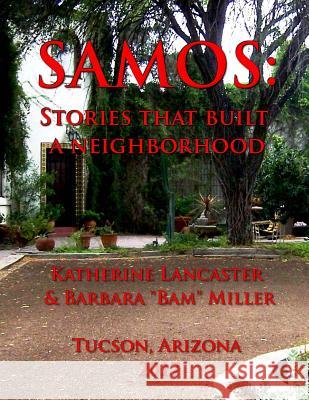Samos: Stories That Built a Neighborhood » książka
Samos: Stories That Built a Neighborhood
ISBN-13: 9781542959353 / Angielski / Miękka / 2017 / 108 str.
This book covers a century of history for the little known Samos neighborhood in Tucson, Arizona that evolved into a thriving middle-class community during Tucson's post World War II boom. The neighborhood is located mid-town in the University of Arizona area, north of Grant Road between Campbell and Mountain Avenues and Glenn Street. Its architecture reflects a time when building was individual rather than standardized like it is today. Neighborhood developers, builders and architects led the way in Tucson's building industry. These leaders included Harold Aston, William Estes, Sr., John Joynt, Josias Joesler, John Murphey, Roy Place, Anne Rysdale, Albert Steinfeld, and William Wilde. The neighborhood name, Samos, was chosen in recognition of Chris Mitchell, one of its developers and builders who immigrated from the Isle of Samos, Greece. Mitchell lived and worked in the neighborhood for many years. His first house, a Mediterranean Revival built in 1929, is the photograph on the cover of this book. Additionally, many Samos neighborhood homeowners during that era actively contributed to the growth and development of Tucson. Their accomplishments are acknowledged in this book. Research also revealed a unique mix of minority racial, ethnic and religious diversity of neighborhood homeowners at a time when segregation was widespread in Tucson and throughout the nation. Today, Samos continues to be an active, middle class neighborhood, represented by Ward 3 of the City of Tucson and District 3 of Pima County. In addition to its 400 residential houses, the neighborhood is home to Salpointe High School, many small businesses along Campbell Avenue - including three original post-war businesses - Catalina Acute Care and Rehabilitation, and a popular 1930s bed and breakfast. All proceeds from the sale of this book will contribute to the financial support of the Neighborhood Association which is committed to neighborhood beautification, conservation, non-profit fundraising, and community-building with neighborhood residents, business owners and educators, other neighborhood coalitions, and local governments.
Zawartość książki może nie spełniać oczekiwań – reklamacje nie obejmują treści, która mogła nie być redakcyjnie ani merytorycznie opracowana.











